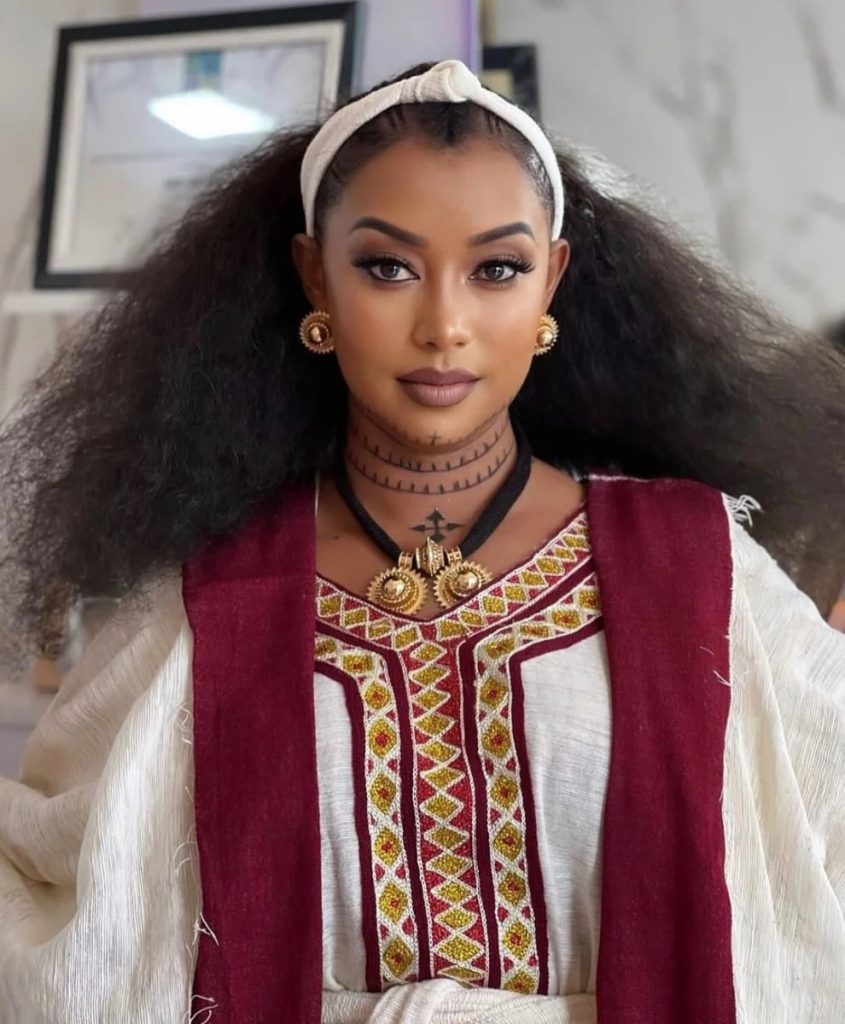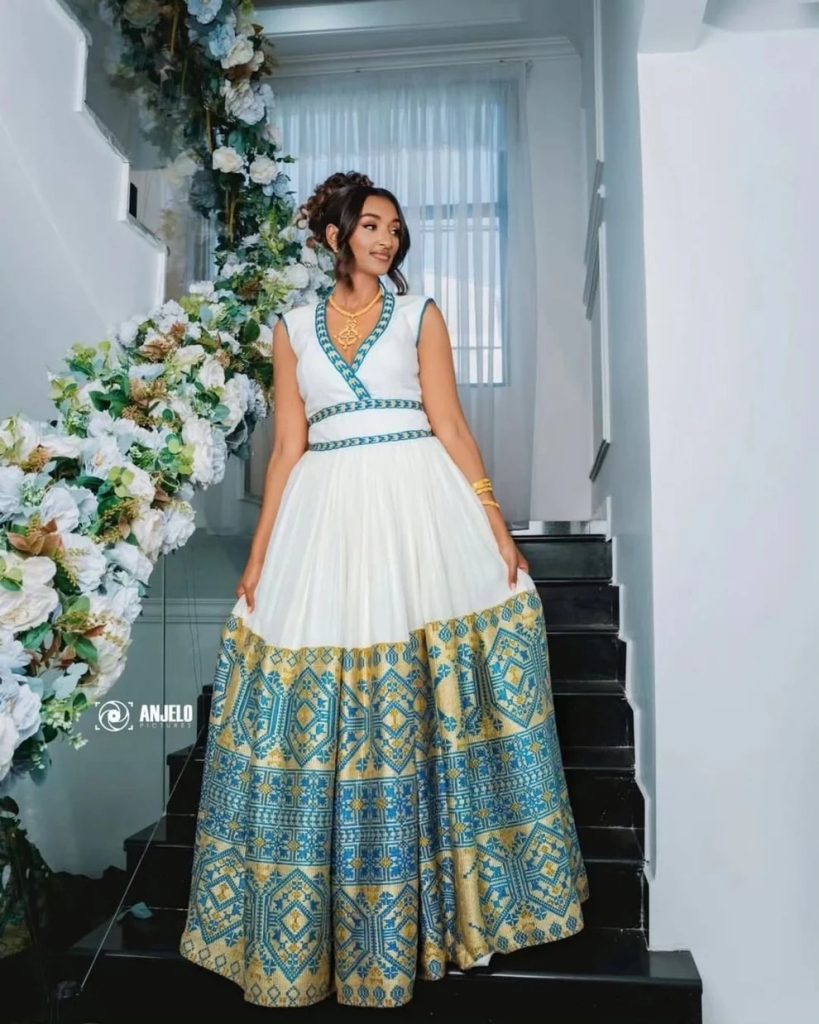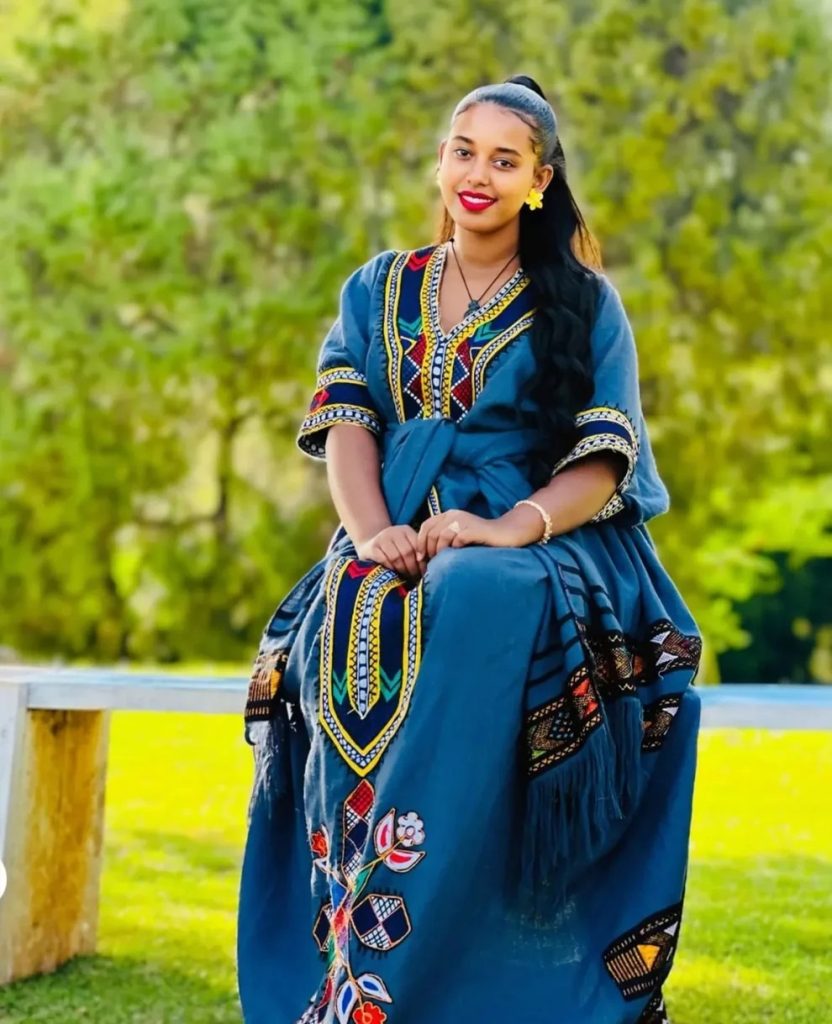Ethiopian Cultural Dress Guide: Fabrics, Embroidery and Styling Tips
Clothing in Ethiopia has always carried meaning far beyond fashion. For centuries, the garments worn by Ethiopians and Eritreans have reflected identity, cultural heritage, and artistry. Today, the Ethiopian traditional dress continues to hold significance, whether it is worn during weddings, religious holidays, or simply to celebrate heritage abroad.
One of the most recognised styles is the Habesha dress, a white cotton garment often decorated with colourful embroidery along the edges. Its popularity is not only rooted in culture but also in its adaptability as both traditional and modern fashion. Closely linked is the Eritrean dress, which shares many characteristics yet has its own distinctive features.
This guide takes you through the fabrics, embroidery, and modern styling of Ethiopian cultural clothing, while also offering practical advice for those looking to wear or purchase a Habesha dress or Habesha kemis.
History and Cultural Significance of Ethiopian Traditional Dress
The history of the Ethiopian traditional dress stretches back centuries, tied closely to the country’s diverse ethnic groups and their cultural practices. Across regions, clothing has been used to signify not only social status but also religious affiliation, marital status, and regional identity.
The most iconic form is the Habesha dress, traditionally worn by women. This long, white cotton dress is handwoven from shemma (ሸማ), a lightweight cotton fabric that keeps the wearer cool in Ethiopia’s climate. The simplicity of the white base symbolises purity, while the colourful embroidered borders, known as tibeb, often reflect regional traditions and symbolic motifs.

Beautiful Habesha kemis worn for Ethiopian cultural celebration
The Eritrean dress shares this foundation, especially in Tigrinya culture, as Ethiopia and Eritrea share centuries of intertwined history. However, Eritrean styles sometimes feature more vivid colours or bold embroidery patterns, giving them a distinct identity.
For men, traditional wear often includes the jodhpurs (wide cotton trousers), a shirt, and a shawl (ነጠላ). Men may also wear cloaks or capes for religious ceremonies. These garments highlight how the Ethiopian dress is not just aesthetic but deeply connected to cultural rituals such as Orthodox Christian celebrations, weddings, and national holidays.
Fabrics of Ethiopian Traditional Dress
The foundation of any Ethiopian traditional dress is the fabric. The most common material is shemma, a handwoven cotton textile. Producing shemma is labour-intensive and requires skill, often done on traditional looms that have been used for generations. Cotton is chosen for its breathability and comfort, making it practical for both everyday wear and festive occasions.
A single Habesha dress can take weeks to complete because of the weaving process. Thin cotton threads are carefully woven to create a semi-transparent fabric, often layered for modesty. White is the dominant colour, but some dresses incorporate beige or light cream tones.
Ethiopian artisans also produce fabrics with colourful woven strips or borders, usually added to the bottom of the dress and around the neckline. These strips can be geometric, floral, or symbolic. For example, cross patterns may reflect Christian heritage, while diamond shapes can symbolise protection.
When comparing with Eritrean dress, the fabrics are similar, but Eritrean styles sometimes use heavier cotton or incorporate silk-like threads in the embroidery. This gives the dress a more pronounced sheen, especially for festive events.
Handwoven textiles in Ethiopia are part of a larger tradition of craftsmanship that has been recognised globally. According to UNESCO’s records on intangible cultural heritage, traditional weaving practices across Africa preserve skills that link communities to their history. This underlines the importance of supporting artisans who continue to produce authentic Habesha kemis and related garments.
Embroidery Styles and Patterns
Embroidery is the signature feature of the Ethiopian traditional dress. Known as tibeb, this embroidery is usually found along the edges of the garment, around the neckline, cuffs, and hemline. Tibeb (ጥበብ) transforms plain cotton into an elegant cultural outfit, making it suitable for special events.
Traditionally, embroidery threads were dyed using natural sources like saffron, plants, and minerals. Gold and deep green threads remain popular, symbolising prosperity and fertility. In modern Habesha dress designs, machine embroidery is sometimes used, but hand-embroidered pieces are still considered more valuable due to the time and craftsmanship involved.
Popular embroidery motifs include:
- Crosses: reflecting Ethiopia’s Orthodox Christian faith.
- Geometric borders: triangles, diamonds, and zig-zags often represent continuity and community.
- Floral patterns: symbolising beauty and growth.
The Habesha kemis, a slightly more modern variation, often features extended embroidery up the chest and shoulders, making it more elaborate. Eritrean dresses, on the other hand, are known for bolder embroidery patterns that cover larger areas of the dress, sometimes in bright reds and blues.
This embroidery not only enhances beauty but also serves as a storytelling element, linking the garment to cultural identity. A bride’s Ethiopian dress, for example, may include embroidery patterns symbolising blessing and fertility, while a holiday dress might feature religious motifs.

Light cotton Ethiopian dress perfect for festive occasions
Ethiopian Traditional Dress Today
In the modern era, the Ethiopian traditional dress continues to evolve. While still deeply rooted in culture, it has been embraced by designers who mix tradition with contemporary cuts, colours, and fabrics. This has made the dress appealing to younger generations and to the Ethiopian diaspora living abroad.
During religious holidays like Timket (Epiphany) and Meskel (Finding of the True Cross), both men and women wear traditional outfits proudly. Women often wear the Habesha dress, accessorised with gold jewellery and braided hairstyles, while men may wear jodhpurs and shawls.
In weddings, the Habesha Kemis is a popular choice for brides and bridesmaids. Its elegance and embroidery make it suitable for the occasion, while grooms wear tailored suits with cultural touches such as a shemma draped over the shoulder.
The Eritrean dress also remains a symbol of identity for Eritreans worldwide. It is common to see both Ethiopian and Eritrean communities celebrating together with their respective traditional clothing, demonstrating the shared heritage yet unique expressions of each culture.
Fashion houses in Addis Ababa and Asmera have also begun modernising these styles by introducing shorter cuts, two-piece sets, or using bold coloured fabrics instead of plain white cotton. Social media has amplified this trend, with influencers and celebrities wearing modernised Habesha dress designs to global audiences.
Styling Tips for Ethiopian and Habesha Dresses
Styling an Ethiopian traditional dress is about balancing cultural authenticity with personal taste. Here are some ways to approach it:
- For Religious Holidays: Choose a classic white cotton Habesha dress with subtle embroidery. Pair with a netela (shawl) draped over the shoulders and gold jewellery for a traditional look.
- For Weddings: Brides may select an ornate Habesha kemis with extended embroidery, while guests can wear colourful variations. Adding statement earrings or traditional gold necklaces enhances the elegance.
- For Everyday Wear: Modernised Ethiopian dress designs with lighter embroidery or shorter cuts can be styled casually with sandals or heels.
- Mixing Cultures: Some in the diaspora mix Western fashion with Ethiopian designs. For example, pairing embroidered tops with jeans or wearing a Habesha dress with a leather jacket.
- Accessories: Traditional braided hairstyles, known as shuruba, pair beautifully with these dresses. Scarves and belts can also add a personal twist.
When considering Eritrean dress, the same styling principles apply, though Eritrean embroidery tends to be bolder, which allows for more colourful accessory pairings.
Buying Guide: Choosing Authentic Ethiopian Traditional Dress
If you are looking to buy an authentic Ethiopian traditional dress, here are some points to keep in mind:
- Fabric Quality: Authentic dresses use handwoven cotton. Machine-made fabric may feel heavier and less breathable.
- Embroidery Work: Look closely at the tibeb. Hand embroidery will have slight imperfections that add uniqueness, while machine embroidery is often uniform.
- Origin: Support artisans and weavers from Ethiopia or Eritrea when possible. This not only ensures authenticity but also helps sustain traditional crafts.
- Occasion: Choose the dress based on its purpose. A heavily embroidered Habesha kemis might be perfect for a wedding, while a simpler Ethiopian dress is ideal for holidays or casual wear.
- Ethical Buying: Many artisans rely on weaving and embroidery as their main livelihood. Purchasing authentic garments directly supports communities and preserves cultural heritage.
Authenticity should always take priority, especially as the global popularity of Habesha dress grows. The more authentic the purchase, the stronger the connection to cultural roots.

Blue cultural Ethiopian dress design for weddings and holidays
The Ethiopian traditional dress is more than clothing; it is a reflection of heritage, craftsmanship, and identity. From handwoven fabrics to the artistry of embroidery, each garment carries history within its threads. Whether you wear a Habesha dress during holidays, choose a modern Habesha kemis for a wedding, or explore the differences between Ethiopian and Eritrean dress, these garments remain timeless cultural symbols.
By understanding fabrics, embroidery, and styling, you not only celebrate fashion but also honour a tradition that has been passed down for generations. Embracing the Ethiopian dress is embracing a living piece of history.
